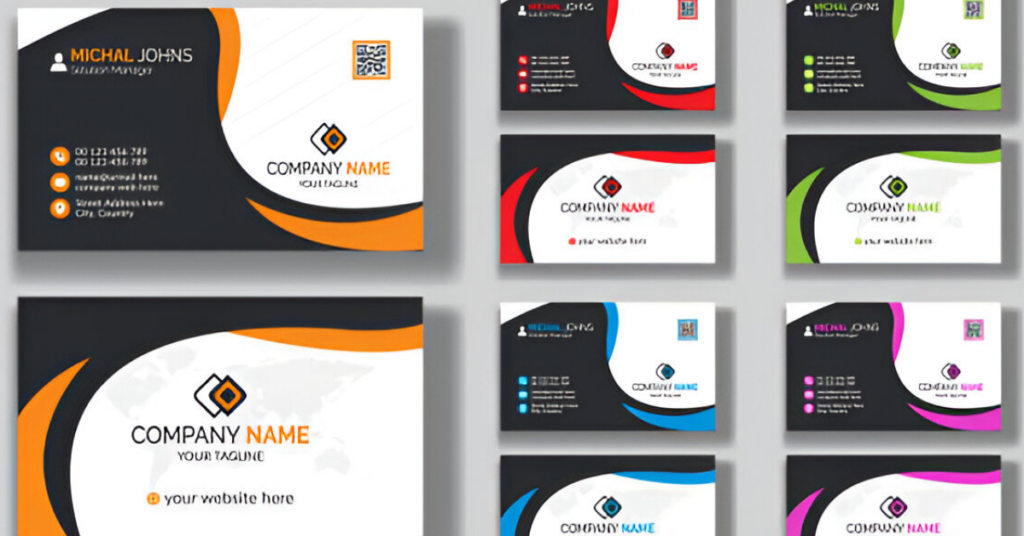There is more to creating a brand identity than simply designing a logo. Even though a logo can be considered a company’s symbol, it is not the entirety of the brand. A logo is only one small step in developing a strong brand personality.
In an era where millions, if not billions, of businesses, compete for the same market share, it has become crucial for each of them to build a strong brand to differentiate themselves from their competition. How do you design a brand name that truly stands out? Well for starters, you should first understand what a brand is and what it takes to establish one, whether you are developing one for a client or yourself.
Here are some general guidelines on how to design an outstanding brand identity, along with a few examples.
What is a Brand Identity?
Your brand identity is the combination of what your brand stands for, your values, how your company communicates its products, and how you want people to feel when they interact with your brand. It can be thought of as your business’s reputation and a promise you make to your customers.
It is often misunderstood that the terms “brand” and “logo” are the same. Originally, the term “brand” refers to cattle ranchers’ marks on their cattle.
Brands are no longer just names or symbols; the concept has evolved to include much more. An organization’s brand is what sets it apart from that of another organization in the marketplace. Many components comprise a brand, including a name, tagline, logo, image, design, and tone of voice.
Therefore, brand identity refers to the way your brand presents itself, as well as the values you communicate to your customers.
In the words of Wayfair Senior Brand Manager Jared Rosen,
“Your brand identity is more than picking the right logo for the sleeves of your coffee cups or mounting it above the door. It involves creating a personality that embodies your brand’s essence.”.
The most compelling brands today have identities that work across digital platforms, and in-person experiences and can talk to real customers naturally.
What is the Importance of Brand Identity?
A brand identity represents nearly everything your business stands for and does, inspiring customers and increasing brand loyalty. Here are six solid reasons why this is important:
- It is Your Company’s “Face”
In many ways, your brand’s logo can be considered the “face” of your company. However, a logo should do more than just look cool or interesting – it should contribute to the creation of a brand image as well.
- Helps to Develop Credibility and Trust
The presence of a strong brand image not only enhances the recognition of your product on the market but also increases its authority.
When a brand develops a face, and keeps that face consistent over time, it increases its credibility and wins customers’ trust.
- Gives Good Impressions of Advertising
Brand identities are templates for everything that is included in advertisements for your business, whether they are print, online, or preroll commercials on YouTube.
Having a face and industry credibility will enable a brand to promote itself effectively and make an impression on potential customers.
- Defines Your Organization’s Mission
It’s important to give your brand a sense of what it stands for when you create its identity. Thus, your company will have a sense of purpose. We are all aware that companies have mission statements, aren’t we? It is impossible to have one without first establishing an identity for your brand.
- Attract New Customers and Keep Existing Ones Happy
When your brand has a face, and a mission, it is trustworthy and allows you, to attract potential customers. Once these individuals become customers, that brand identity makes them feel like part of the company.
Having a good product will generate customers, but having a good brand will generate advocates. You will have to put in some effort for your business to be recognized as a well-known and beloved brand name.
The following are the steps you should take to develop a brand identity. The steps are straightforward—implementing them, however, is a different matter.
How to Build Brand Identity Design
The process of building a brand should not be undertaken haphazardly. In addition to creating a logo and choosing some key colors, there are several other factors to consider. Here are some brand design tips you can follow:
- Identify Your Target Audience, Your Value Proposition, and Your Competitors
Researching the market is the first step in creating a good brand personality, as with any aspect of starting a business. There are five things that you should clarify and understand before you move forward.
- The Target Audience
People have different preferences, no doubt about it. As a general rule, you cannot market a product to a preteen in the same way that you would market a product to a college student.
For a brand that people will love, it is imperative to learn what your audience expects from a company in your industry.
- Competition & Value Proposition
How is your business unique within your industry? Is there anything that you can offer your consumers that others cannot? Building a successful brand requires you to understand what makes you different from your competitors.
You can also learn from your competitors what branding techniques are effective and what techniques are not.
- The Mission Statement
The mission statement of your business should describe your vision and goals clearly and concisely.
Essentially, you can’t successfully create a business personality unless you understand the purpose of the enterprise.
- Brand Personality
Even though you are not necessarily branding an individual, you can still create a personable brand image. The type, colors, and imagery should be used to convey your brand’s identity. When you have created the visual representation, use your tone of voice to enhance it:
Do you possess a similar sense of confidence and charisma as Nike? Would you describe yourself as ritzy and professional, such as Givenchy? The most important thing is to develop your brand to represent your company effectively.
There is nothing more boring than conducting research for your business, but the more information you gain, the stronger your brand identity will be.
Nike.com
- SWOT Analysis
Last but not least, it is highly recommended that you complete a SWOT Analysis to better understand your brand. Taking into account the brand’s characteristics will help you determine what characteristics you wish the brand to convey.
- Create a Logo and Template
Once you have a solid understanding of your business, it’s time to make it a reality. Paul Rand says that design is your brand’s silent ambassador. Here are some things you should know:
- How to Design a Logo
Although your logo isn’t the entire brand identity, it’s important because it’s what your audience recognizes the most. Every aspect of your business, including your website, business cards, and online ads, displays it.
However, despite your logo’s importance to branding, it isn’t the only element that makes a brand stand out. It also includes the product(s) you offer, the packaging, or the way you present your services.
Start with research to understand your business goals, audience, and competitors. Use online tools like Adobe Illustrator or Inkscape for initial designs or hire a professional designer from Brandigits for a polished look. Your logo should:
- Reflect your brand values: Choose elements like shapes, colors, and fonts that communicate your identity.
- Be versatile: Ensure the design works across different mediums, such as print, digital, and merchandise.
- Stay simple: A clutter-free design is easier to recognize and remember.
The visual representation of your business in everything you do will help your consumers become familiar with you.
Consider McDonald’s golden arches. The interesting form of the iconic “M” has made it recognizable throughout the world.
- Where to Find Imagery
Using the right imagery is vital to creating a professional logo. Look for royalty-free or licensed images to avoid copyright issues. Some reliable sources include:
- Free Resources: Unsplash, Pexels, and Pixabay.
- Paid Resources: iStockPhoto, Shutterstock, and Adobe Stock.
- Custom Graphics: Work with illustrators or graphic designers to create unique visuals.
Always ensure your imagery matches your brand’s tone and values.
- Make Templates of Logo
Daily, you may send out emails, write letters, or distribute business cards to prospective customers.
It is important to create templates for all aspects of your business operation (even as minute as your email signatures) to give your company a more professional, credible, and unified image.
- Flexibility
Consistency is important – but maintaining flexibility is just as important in today’s society, where there is always a search for new and better things. Flexibility allows for adjustments in advertising campaigns, taglines, and even the appearance of your brand to continue to attract your target audience.
All changes to your brand should be consistent (e.g., don’t make changes only to the design of your business cards).
- Make a Document for Brand Guidelines
Establishing brand guidelines can make it easier for businesses to adhere to their branding “rules” by documenting all of the dos and don’ts.
The Skype brand has done an excellent job developing a clear, cohesive brand guide that is easy to understand and follow. As a result, people will be empowered to build brand assets and share the brand while remaining compliant with the brand standards.
- Use Social Media Language to Connect, Advertise, and Express Yourself
After establishing your company’s brand and completing all the necessary steps to develop it, you’re now prepared to integrate your brand within your community. Your brand must provide high-quality content to achieve this objective.
- Use Suitable Language
Make sure your brand’s language reflects your brand’s personality. Be more conversational if your brand identity is high-end; if it is laid-back, use more professional language. For your brand’s language to be integrated throughout the entire organization, it must be carefully crafted to match your brand’s personality.
- Add Some Emotion and Connection
People enjoy reading stories. A more accurate statement would be that people love stories that move them (emotionally as well as to action).
Having a good brand reputation can help establish an emotional connection between a brand and its customers, which can help establish a long-term relationship.
Source: unsplash.com
- Advertise
The most effective way to introduce your brand to the world is to design advertisements, whether traditional or digital. It is a means of reaching your target audience with your brand’s message.
- Use Social Media to Connect With Customers
Social media is also essential when it comes to establishing a relationship between your customers and brands. You can use many online platforms like Facebook, Instagram, Twitter (X) to create your brand name and connect with thousands if not then millions of targeted audiences very easily. .
- Remember What to Avoid
While all the steps for creating a strong brand reputation are important, if you’re guilty of any of the following, your brand may falter or fail.
- Don’t Confuse Your Customers
You should be clear about what you want to convey and use the appropriate language and visuals to convey it. The fact that something makes sense to you does not mean that it will be understandable to your customers.
Source: unsplash.com
- Avoid Copying Your Competitors
Since you may be selling the same product or service as your competitors, you might be tempted to do what you know works – do not do it.
To make your business stand out even more in your industry, consider what they do and put your personal touch on it.
- Maintain Consistency in Branding
Your print materials may look somewhat different from your online appearance, but your colors, typeface, theme, and message must all be consistent.
- Don’t Ignore the Mobile Optimization
If your brand design is not optimized for mobile, it might lead to bad user experiences and reduced engagement, as 60% of all web traffic now comes from mobile devices. You could lose a sizable percentage of your audience if your design fails to meet mobile users’ expectations.
- Monitor and Improve
In the same way as other aspects of your marketing, it is difficult to identify what you are doing well (and what isn’t) without monitoring your performance indicators.
Using Google Analytics, comments, surveys, social media monitoring tools, etc., you can track and analyze your brand’s mentions and interactions. Taking this approach will allow you to make changes as needed to your brand – whether to correct a mistake or to improve your company’s image.
source: unsplash.com
Conclusion
It is important to understand the importance of brand identity and how it can impact a business’s success. The five steps outlined here explain how to do this in a comprehensive way that includes key elements such as values, mission, vision, and brand story.
Taking inspiration from examples of strong brand designs is an excellent way to develop one’s concept and visual representation.


